Pins may be small components, but they play a critical role in various industrial and mechanical applications.
These fastening elements provide secure connections, precise alignment, and structural stability, ensuring the smooth operation of machinery, equipment, and assemblies.
This comprehensive guide explores the different types of industrial pins, their manufacturing processes, materials, advantages, and applications.
Additionally, it outlines key factors to consider when selecting the right pin fastener for specific industrial needs.
1. Basic Concepts and Terminology
A thorough understanding of basic concepts and terminology is fundamental when working with pin fasteners,
as it lays the groundwork for designing and selecting the appropriate type of pin for any application.
What Are Pins?
Pins are a category of fasteners typically used to secure, align, or join two or more components together.
Unlike threaded fasteners, pins generally lack internal threads and function by being inserted into pre-drilled or punched holes.
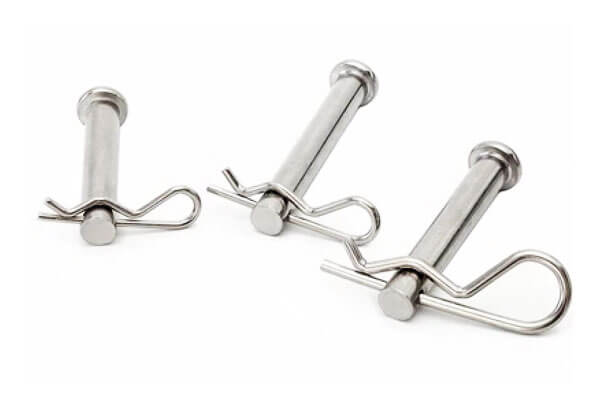
Once in place, they provide a permanent or semi-permanent connection by acting as a pivot or alignment element within an assembly.
This simple yet effective mechanism is critical for ensuring the stability and functionality of mechanical systems.
Key Terminology in Pin Fastening
A clear grasp of specialized terminology is essential for effective communication and design in the field of pin fasteners. Here are some of the most important terms associated with pins:
- Shank:
The shank is the main body of the pin, typically cylindrical or tapered. It is designed to fit snugly within a hole, ensuring proper alignment and load distribution. - Head:
The head is the portion of the pin that remains visible after installation.
It often provides a bearing surface and may be designed in various shapes (e.g., round, countersunk) to suit both functional and aesthetic requirements. - Mandrel:
Found primarily in blind rivet variants, the mandrel is an internal rod that assists in the expansion of the pin during installation.
Once the pin is secured, the mandrel breaks off, leaving a clean, secure joint. - Drive Pin:
In certain types of pins such as drive rivets, a drive pin is used to force the body of the pin to expand, thereby locking the fastener in place.
This feature facilitates rapid and efficient installation. - Upsetting:
This process involves deforming the end of a pin, typically by hammering or pressing, to create a second head that locks the pin within the assembly.
Upsetting is critical to ensure that the pin remains firmly in place under operational loads. - Set/Setting:
The term “set” refers to the state when the pin has been fully installed and secured, with its tail or mandrel deformed to create a second head.
A properly set pin ensures maximum holding strength and durability.
The Basic Mechanics of Pin Fastening
Pins function by being inserted into a pre-aligned hole and then being secured by a mechanical deformation process. This process can vary depending on the type of pin.
For instance, with solid pins, the tail is typically deformed using a hammer or specialized tool, which creates a second head that holds the assembly together.
In contrast, blind or self-piercing pins use internal mechanisms, such as a mandrel or drive pin, to expand the fastener and lock it securely in place.
- Alignment:
Proper alignment of the components is essential for ensuring that the pin fits accurately into the pre-drilled hole, which maximizes load transfer and minimizes potential movement. - Interference Fit:
Many pins are designed to create an interference fit, meaning that the pin’s diameter slightly exceeds that of the hole, ensuring a tight, secure connection once installed. - Load Distribution:
Once installed, the pin distributes the load evenly across the joint, providing both structural integrity and resistance to dynamic stresses such as vibrations and impacts.
2. Types of Industrial Pins
In this section, we provide an in-depth look at the different types of industrial pins, discussing their unique design features, installation methods, and typical applications.
Cotter Pins (Split Pins)
Cotter pins, also known as split pins, are U-shaped fasteners featuring two prongs that are bent over after insertion to secure the connection.
Their simple design and ease of installation make them ideal for preventing nuts and bolts from loosening.
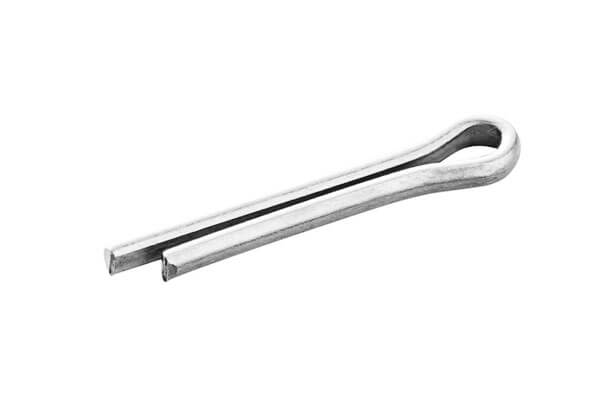
Cotter pins excel in applications that require a reliable, permanent lock, such as in automotive linkages and heavy machinery.
Dowel Pins
Dowel pins are precision-engineered cylindrical rods that serve primarily as alignment elements.
They ensure accurate positioning of components by fitting snugly into corresponding holes.
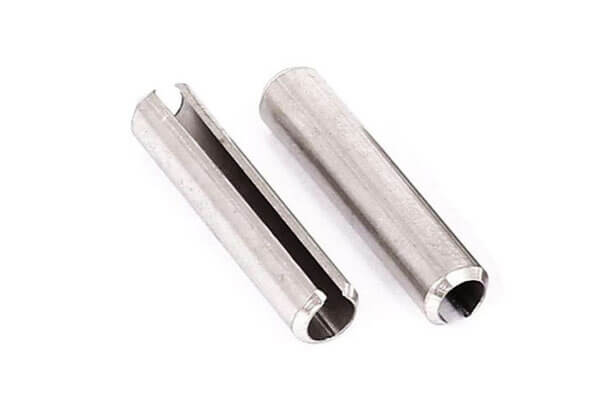
In high-precision manufacturing—such as in aerospace assemblies or medical devices—dowel pins maintain strict tolerances and provide the necessary stability for critical joints.
Spring Pins (Roll Pins)
Spring pins, commonly known as roll pins, are hollow, cylindrical fasteners with a longitudinal slit that allows them to compress during installation and then expand to secure the joint.
Their unique design offers excellent vibration resistance and is especially useful in applications where maintaining consistent alignment is crucial.
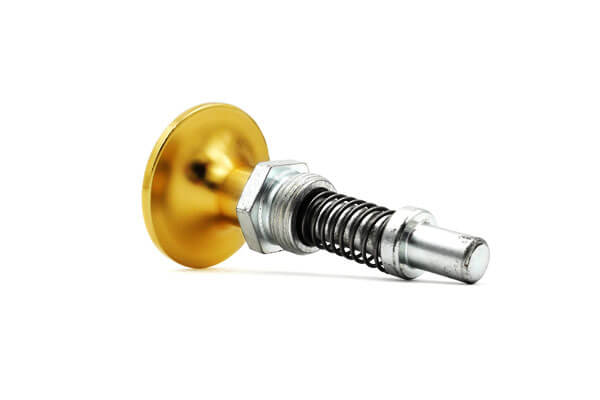
Spring pins are frequently employed in automotive and industrial systems, where reliability under dynamic loading is essential.
Taper Pins
Taper pins feature a gradual reduction in diameter from one end to the other, ensuring a tight, interference fit when inserted into a tapered hole.
This design provides precise positioning and strong resistance against rotational forces,
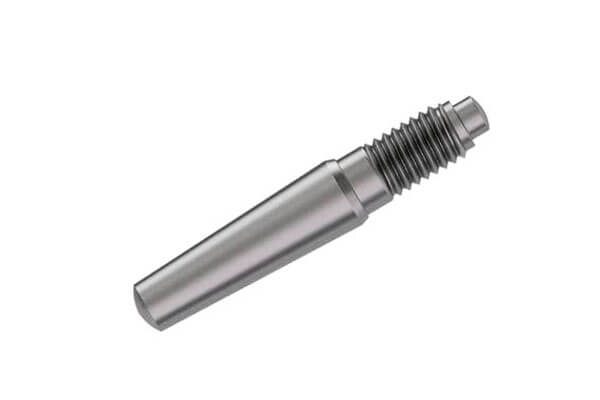
making taper pins well-suited for mechanical assemblies in automotive transmissions and heavy machinery.
Hitch Pins
Hitch pins are straight fasteners with integrated locking mechanisms, specifically designed to secure couplings in applications such as trailer hitches and agricultural equipment.
Their robust design and ease of manual insertion make them a popular choice for ensuring safety and reliability in high-stress environments.

Grooved Pins
Grooved pins include one or more longitudinal grooves along their length, which enhance their retention capability by increasing friction between the pin and the assembly.
These pins are especially beneficial in applications where preventing slippage is critical, such as in precision equipment and industrial machinery.
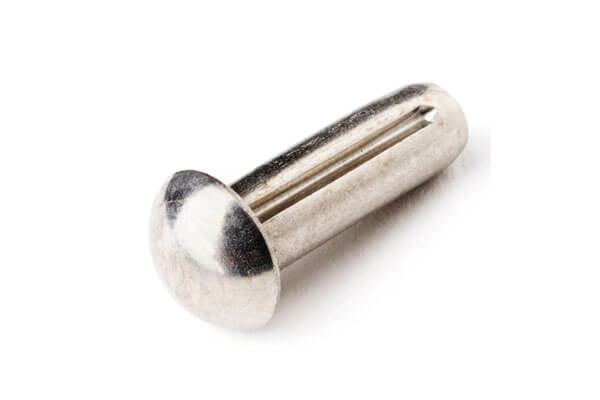
Linchpins
Linchpins, often used in mechanical assemblies involving rotational components, serve as self-locking devices that prevent wheels or other parts from detaching from axles.
Their secure locking mechanism ensures safety in heavy-duty transportation and machinery applications, making them a staple in sectors like agriculture and construction.
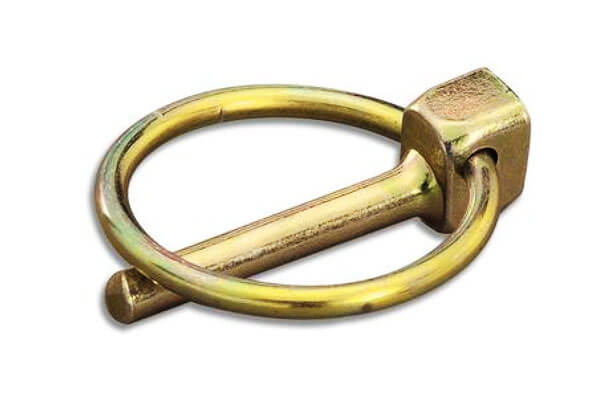
Knurled Pins
Knurled pins incorporate a textured surface with ridges or knurls that improve grip during installation and removal.
This enhanced surface friction makes them ideal for applications where temporary alignment or adjustable fastening is required, such as in tool assembly and experimental prototypes.
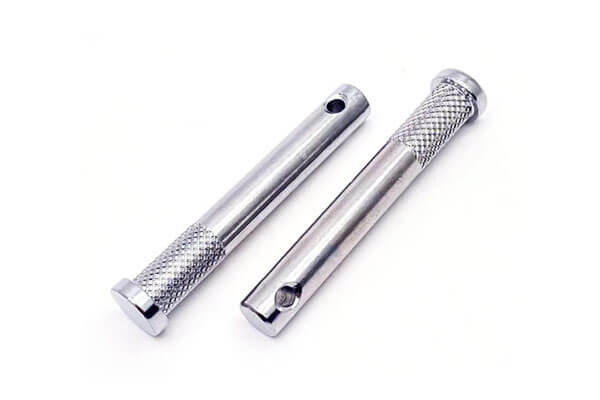
Shear Pins
Shear pins are designed to intentionally fail under specific loads, serving as a protective mechanism that safeguards machinery from excessive force.
By breaking at a predetermined stress level, shear pins prevent more critical components from being damaged.
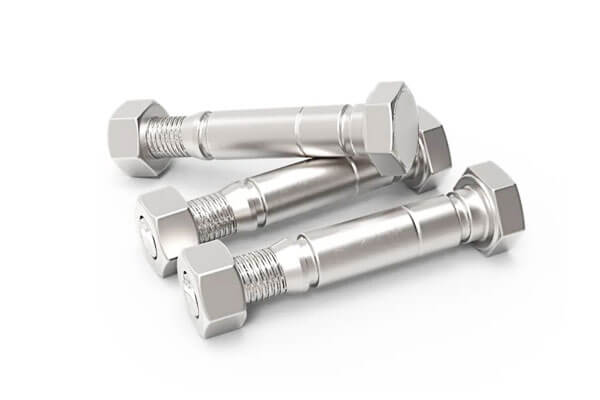
This characteristic makes them essential in safety-critical applications in industries such as automotive and aerospace.
Wire Lock Pins
Wire lock pins feature an integrated wire loop that locks the pin in place, ensuring a secure connection even under dynamic loads.
Their ease of installation and robust locking mechanism make them suitable for applications where quick assembly and disassembly are advantageous, such as in modular furniture and consumer electronics.
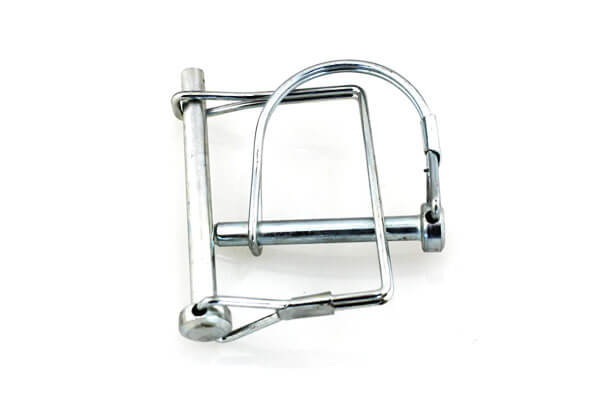
L-Handle Pins
L-handle pins incorporate an L-shaped handle that simplifies the installation and removal process.
This design is particularly useful in applications where frequent disassembly is required, such as in adjustable machinery or maintenance-intensive systems.
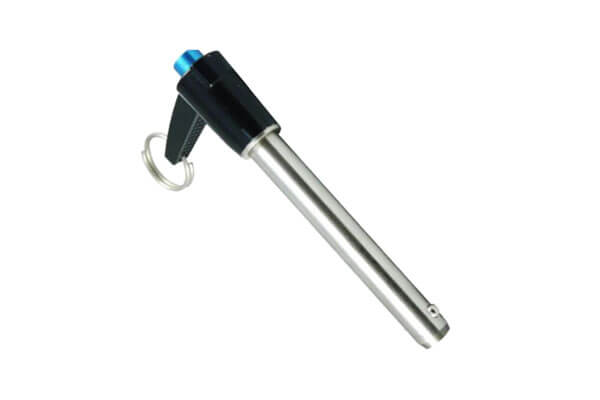
R-Clips (R-Pins)
R-clips, also known as R-pins, are characterized by their distinctive “R” shape.
These fasteners are commonly used in securing axles and shafts, where their unique design ensures a firm hold, contributing to the overall stability of the assembly.
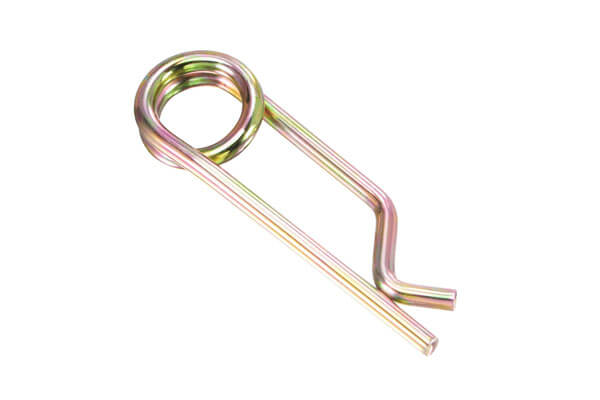
Clevis Pins
Clevis pins are cylindrical fasteners used in conjunction with a cotter pin or split pin to create a pivot point.
They are widely used in agricultural equipment and machinery, where they facilitate smooth movement and reliable load transfer within mechanical linkages.
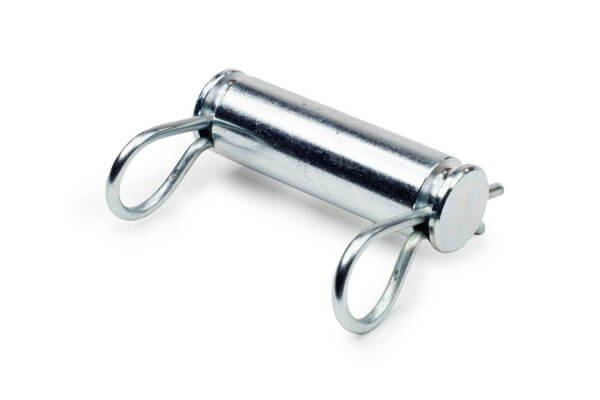
Detent Pins
Detent pins feature a spring-loaded ball mechanism that locks the pin in place once inserted.
This design provides a secure and reusable fastening solution, particularly useful in applications that require frequent engagement and disengagement without compromising on reliability.
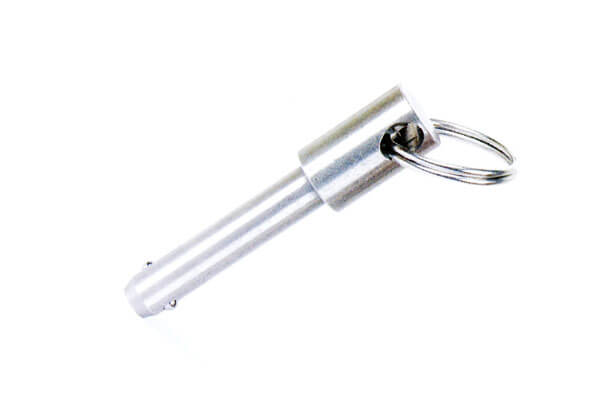
Retractable Spring Latch Pins
Retractable spring latch pins are designed with a retractable mechanism that allows for quick locking and unlocking.
These pins are especially valuable in high-frequency applications where rapid assembly and disassembly are critical, such as in modular systems and consumer products.
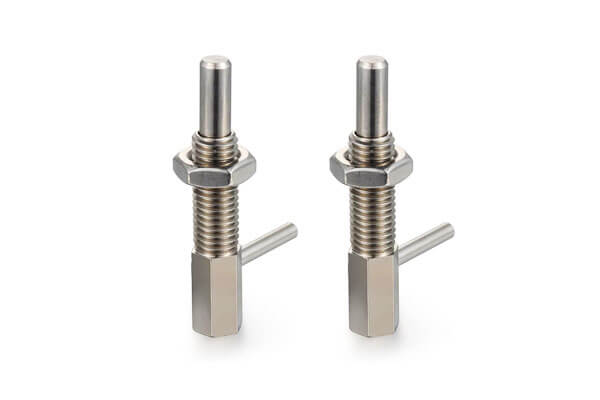
3. Manufacturing Processes for Pin Fasteners
The production of pin fasteners involves a blend of traditional methods and modern technology, ensuring high precision, durability, and consistent quality.
Manufacturers employ various techniques—ranging from CNC machining to forging and stamping—to produce pins that meet the rigorous demands of modern industrial applications.
This section provides an in-depth look at the key manufacturing processes used to create high-quality pin fasteners.
CNC Machining
CNC machining is widely used for producing pins that require intricate details and tight tolerances.
In this process, a computer numerical control machine precisely removes material from a solid block of metal to achieve the desired pin geometry.
- Precision and Consistency:
CNC machining delivers exceptional accuracy, making it ideal for manufacturing small, detailed pins used in precision instruments and electronic devices. - Material Flexibility:
This process accommodates a variety of materials, including steel, aluminum, and brass, ensuring that the final product meets specific performance requirements. - Efficiency:
By automating the machining process, manufacturers can achieve high throughput with minimal human intervention, which reduces production time and labor costs.
Stamping
Stamping is an efficient method for mass-producing pins from metal sheets. This process uses high-speed presses and precision dies to cut and form the desired shape from a flat sheet.
- High Volume Production:
Stamping is ideal for large-scale production, allowing manufacturers to produce consistent and uniform pins in high quantities. - Cost-Effectiveness:
The method minimizes material waste by cutting the desired shape from the sheet with high accuracy, lowering overall production costs. - Speed:
The rapid nature of stamping makes it particularly attractive for applications requiring fast turnaround times.
Forging
Forging is employed to create pins that demand superior strength and durability.
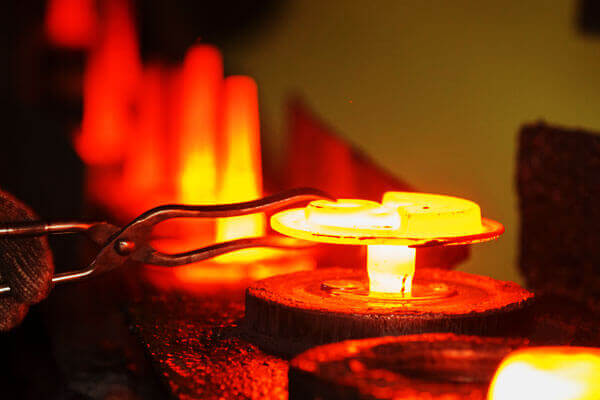
In this process, a heated metal bar is shaped under high pressure, resulting in a refined grain structure that enhances mechanical properties.
- Enhanced Strength:
Forged pins exhibit improved toughness and resistance to fatigue, making them well-suited for heavy-duty applications such as automotive and aerospace assemblies. - Uniform Microstructure:
The high-pressure deformation results in a consistent microstructure that minimizes internal defects, thereby increasing the reliability of the fastener. - Versatility:
Forging allows for the production of both standard and custom pin designs, catering to applications where high load-bearing capacity is essential.
Heat Treatment
Heat treatment plays a pivotal role in optimizing the mechanical properties of pin fasteners.
This process involves controlled heating and cooling to alter the microstructure of the metal, thereby enhancing hardness, strength, and wear resistance.
- Process Integration:
After forming the basic shape through machining, stamping, or forging, pins often undergo heat treatment processes
such as annealing, quenching, and tempering to achieve the desired properties. - Performance Enhancement:
Through heat treatment, manufacturers can tailor the hardness and ductility of the pin, ensuring it withstands high operational stresses and extends its service life. - Quality Assurance:
Advanced heat treatment techniques, such as induction heating and laser heat treatment,
provide precise temperature control and uniform treatment, further enhancing material performance.
Quality Control and Inspection
Rigorous quality control is critical in the production of pin fasteners. Manufacturers implement advanced inspection methods to ensure that every pin meets stringent performance standards.
- Non-Destructive Testing (NDT):
Techniques like X-ray imaging, ultrasonic testing, and optical microscopy are used to detect internal defects and verify material integrity without damaging the pin. - Dimensional Verification:
Precision measurement tools, including laser scanners and coordinate measuring machines (CMM), confirm that each pin adheres to tight dimensional tolerances. - Process Monitoring:
Real-time monitoring systems, often integrated with digital control technologies, help maintain consistent quality throughout the manufacturing process.
4. Common Materials for Pin Fasteners
Selecting the right material for pin fasteners is crucial for ensuring durability, reliability, and optimal performance in various applications.
The choice of material directly impacts the pin’s strength, corrosion resistance, weight, and overall functionality.
Different industries require different materials based on environmental conditions, load-bearing capacity, and mechanical properties.
This section provides an in-depth look at the most commonly used materials for manufacturing pin fasteners, along with their characteristics and applications.
Carbon Steel
Overview: Carbon steel is one of the most commonly used materials for pin fasteners due to its high strength, durability, and affordability.
It consists primarily of iron and carbon, with varying amounts of manganese and other elements to enhance specific properties.
Key Characteristics:
- High Strength: Capable of withstanding heavy loads and mechanical stress.
- Cost-Effective: More affordable compared to stainless steel and titanium.
- Versatile: Suitable for a wide range of industrial applications.
Common Applications:
- Automotive components (axles, shafts, and suspension systems).
- Structural assemblies in construction.
- Heavy machinery and equipment.
Considerations:
Carbon steel is prone to rust and corrosion, so additional surface treatments
such as galvanization, black oxide coating, or zinc plating are often applied to enhance corrosion resistance.
Stainless Steel
Overview: Stainless steel is highly valued for its excellent corrosion resistance, strength, and durability.
It contains chromium, which forms a passive oxide layer that protects the metal from rust and oxidation.
Key Characteristics:
- Superior Corrosion Resistance: Ideal for humid, marine, and chemically aggressive environments.
- High Strength and Durability: Withstands mechanical stress and wear over time.
- Aesthetic Appeal: Often used in applications requiring a clean, polished look.
Common Applications:
- Marine and offshore equipment.
- Medical devices and surgical instruments.
- Food processing and pharmaceutical machinery.
- Aerospace and defense components.
Considerations:
Stainless steel is generally more expensive than carbon steel but offers superior longevity and lower maintenance costs.
Brass
Overview: Brass is an alloy of copper and zinc, offering a unique combination of corrosion resistance, machinability, and aesthetic appeal.
It is widely used in applications requiring non-magnetic properties and a polished appearance.
Key Characteristics:
- Good Corrosion Resistance: Particularly effective against moisture and mild chemicals.
- Easy to Machine: Allows for precise and intricate pin designs.
- Non-Sparking and Non-Magnetic: Ideal for electrical and hazardous environments.
Common Applications:
- Electrical connectors and circuit board fasteners.
- Decorative hardware and architectural elements.
- Marine and plumbing applications.
Considerations:
Brass is softer than steel, making it less suitable for heavy-load applications. However, its corrosion resistance and workability make it a preferred choice for specialized applications.
Aluminum
Overview: Aluminum is a lightweight yet strong material commonly used in applications where weight reduction is essential. It naturally forms an oxide layer that provides corrosion resistance.
Key Characteristics:
- Lightweight: Ideal for aerospace and automotive applications where weight reduction is critical.
- Corrosion-Resistant: Suitable for outdoor and marine environments.
- Good Conductivity: Used in electrical and thermal applications.
Common Applications:
- Aircraft and aerospace components.
- Lightweight machinery and sports equipment.
- Electrical and heat dissipation systems.
Considerations:
Although aluminum is highly resistant to corrosion, it is softer than steel and may not be suitable for high-stress applications.
Titanium
Overview: Titanium is an advanced engineering material known for its exceptional strength-to-weight ratio, corrosion resistance, and biocompatibility.
It is often used in demanding environments where high performance is required.
Key Characteristics:
- High Strength-to-Weight Ratio: Stronger than steel but significantly lighter.
- Excellent Corrosion Resistance: Withstands extreme temperatures and harsh environments.
- Biocompatible: Ideal for medical and aerospace applications.
Common Applications:
- Aerospace and military components.
- Medical implants and surgical equipment.
- High-performance automotive and sports equipment.
Considerations:
Titanium is more expensive than other metals, and its machining process requires specialized tools, increasing production costs.
Copper
Overview: Copper is known for its excellent electrical and thermal conductivity, making it an essential material in electrical and electronic applications.
It also possesses natural antimicrobial properties.
Key Characteristics:
- Superior Conductivity: Ideal for electrical and thermal applications.
- Corrosion Resistance: Develops a protective patina over time.
- Antimicrobial Properties: Suitable for medical and food-grade applications.
Common Applications:
- Electrical components and grounding pins.
- Plumbing and HVAC systems.
- Antimicrobial surfaces in healthcare environments.
Considerations:
Copper is relatively soft and may deform under high mechanical stress, making it unsuitable for heavy-duty fastening applications.
Nickel Alloys
Overview: Nickel-based alloys, such as Monel and Inconel, are engineered for extreme environments, offering outstanding strength, heat resistance, and corrosion resistance.
Key Characteristics:
- Exceptional Heat and Corrosion Resistance: Performs well in high-temperature and chemically aggressive conditions.
- High Strength and Hardness: Provides excellent durability under extreme stress.
- Resistant to Oxidation and Wear: Maintains structural integrity in demanding environments.
Common Applications:
- Aerospace and turbine engines.
- Chemical processing and power generation.
- Marine and offshore drilling components.
Considerations:
Nickel alloys are expensive and require specialized machining processes, increasing production costs.
Plastic (Nylon, Polycarbonate, and PEEK Pins)
Overview: While metal pins dominate industrial applications, certain engineering plastics are used when weight reduction, electrical insulation, or chemical resistance is required.
Key Characteristics:
- Lightweight and Non-Conductive: Ideal for electrical and electronic applications.
- Corrosion and Chemical Resistance: Suitable for harsh chemical environments.
- Impact and Wear Resistance: Some high-performance plastics, such as PEEK, offer superior durability.
Common Applications:
- Electrical insulation components.
- Food and pharmaceutical processing equipment.
- Lightweight fasteners in medical and aerospace applications.
Considerations:
Plastic pins have lower mechanical strength compared to metal fasteners, limiting their use in high-load applications.
5. Key Advantages and Disadvantages of Pin Fasteners
Pin fasteners are widely used across various industries due to their versatility, reliability, and ease of installation.
However, like any fastening solution, they have both strengths and limitations.
Understanding their key advantages and disadvantages helps engineers and manufacturers determine the most suitable fastening method for specific applications.
5.1. Key Advantages of Pin Fasteners
High Strength and Durability
- Pin fasteners, particularly those made from steel, stainless steel, or titanium, offer exceptional mechanical strength.
- They can withstand high shear and tensile forces, making them ideal for applications in heavy machinery, aerospace, and automotive engineering.
Secure and Reliable Fastening
- Many pin types, such as dowel pins and taper pins, provide precise alignment and tight fits, reducing movement between components.
- Certain pins, such as shear pins, are designed to fail under excessive loads, preventing damage to critical machinery components.
Corrosion and Environmental Resistance
- Stainless steel, brass, aluminum, and titanium pins exhibit excellent resistance to rust and corrosion, making them ideal for marine, medical, and outdoor applications.
- Surface treatments like galvanization, anodizing, or plating further enhance corrosion resistance.
Ease of Installation and Removal
- Unlike threaded fasteners, most pin fasteners can be installed quickly without the need for complex tools or threading operations.
- Many pins, such as cotter pins and hitch pins, allow for easy manual removal and reinstallation, improving maintenance efficiency.
Cost-Effective Fastening Solution
- Pin fasteners are generally affordable and offer a long service life, reducing replacement costs.
- Mass production techniques, such as stamping and cold heading, allow for large-scale manufacturing at low costs.
Versatile and Adaptable
- Available in various shapes, sizes, and materials, pin fasteners can be customized for specific applications.
- Used in a wide range of industries, including aerospace, medical, construction, and electronics.
Vibration Resistance
- Certain pin fasteners, such as grooved pins and spring pins, provide excellent resistance to loosening due to vibrations, making them ideal for dynamic applications.
No Need for Additional Fastening Elements
- Many pins function without requiring additional hardware, such as nuts or washers, simplifying assembly.
- This reduces weight and minimizes the number of components in a system.
5.2. Key Disadvantages of Pin Fasteners
Limited Load-Bearing Capacity Compared to Threaded Fasteners
- While strong, pin fasteners may not provide the same level of load distribution as bolts or screws, which can result in stress concentrations in certain applications.
Potential for Wear and Loosening Over Time
- Repeated use and movement can cause wear in both the pin and the surrounding hole, reducing effectiveness over time.
- Pins used in high-vibration environments may experience slight loosening if not properly secured.
Requires Precise Hole Alignment
- For certain pins, such as dowel pins and taper pins, precise hole alignment is necessary for proper installation.
- Misalignment can lead to improper fits, affecting the performance of the assembly.
Can Be Difficult to Remove in Some Applications
- Some pin fasteners, particularly press-fit dowel pins and knurled pins, require significant force or specialized tools for removal.
- This can complicate maintenance and repairs.
Not Ideal for All Types of Joints
- Pin fasteners are best suited for shear load applications but may not perform as well in high-tension applications compared to bolts or rivets.
- In certain cases, additional fastening methods may be needed to ensure structural integrity.
Susceptible to Corrosion Without Proper Treatment
- While stainless steel and other corrosion-resistant materials are available, standard carbon steel pins require coatings or treatments to prevent rust in harsh environments.
- Failure to apply protective treatments can lead to premature wear and failure.
Some Pins Require Additional Locking Mechanisms
- Certain pin types, such as clevis pins, require cotter pins or clips for secure fastening, adding an extra step to the assembly process.
- If secondary locking components are lost or improperly installed, the fastening reliability may be compromised.
6. Industrial Applications of Pins
Aerospace Industry
- Alignment and Positioning: Dowel pins are extensively used in aerospace manufacturing for precise alignment and positioning of components during assembly processes.
Their high precision helps ensure the accurate fitting of parts. - Secure Fastening: Cotter pins and spring pins are often utilized in securing control surfaces,
landing gear assemblies,
and other critical components that require reliable fastening under dynamic loads.
Automotive Manufacturing
- Component Assembly: Spring pins and dowel pins are commonly applied in the assembly of engines, transmissions,
and other mechanical systems where they help maintain component alignment and resist wear. - Safety Features: Cotter pins play a crucial role in securing safety-critical parts such as steering mechanisms and braking systems,
ensuring these components do not loosen over time or due to vibration.
Construction and Heavy Machinery
- Structural Integrity: Taper pins and grooved pins are frequently used in heavy machinery and construction equipment to
ensure structural integrity by securely fastening large components together. - Wear Resistance: In environments where wear resistance is important, such as in earthmoving equipment, hardened steel pins are preferred for their durability and longevity.
Electronics and Electrical Engineering
- Circuit Board Assembly: Precision ground dowel pins are essential in the production of printed circuit boards (PCBs),
aiding in the accurate placement and soldering of electronic components. - Insulation and Protection: Plastic pins are often employed in electrical insulation and protection applications,
providing a non-conductive solution for mounting and securing components within enclosures.
Medical Devices
- Precision Instruments: Stainless steel dowel pins are vital in medical devices requiring high precision and corrosion resistance, such as surgical instruments and diagnostic equipment.
- Assembly of Implants: Certain types of pins are also used in the assembly of medical implants, where biocompatibility and strength are paramount.
Marine Engineering
- Corrosion Resistance: Stainless steel and Monel pins are favored in marine applications due to their excellent corrosion resistance properties,
which are necessary for enduring harsh saltwater environments. - Hull and Deck Assemblies: These pins are used in the assembly of hulls, decks, and other structures, contributing to the overall durability and watertightness of vessels.
Furniture and Consumer Goods
- Joinery and Assembly: Wooden dowels and plastic pins are commonly used in furniture manufacturing
for joining pieces together without visible screws or nails, offering both aesthetic and functional benefits. - Fastening and Securing: Various types of pins are used in consumer goods ranging from toys to household appliances,
providing secure fastening while maintaining ease of assembly and disassembly for maintenance purposes.
7. Partner with LangHe for High-Quality Pin Fasteners
At LangHe, we specialize in the production of high-precision, custom-machined pin fasteners for diverse industrial needs.
Our expertise in CNC machining, forging, and stamping ensures superior-quality pins tailored to your requirements.
Whether you require standard or custom pin fasteners, LangHe offers high-performance solutions for automotive, aerospace, medical, and industrial applications.
8. Conclusion
Pin fasteners are indispensable components in industrial applications, offering strength, alignment, and ease of installation.
Choosing the right type of pin ensures secure, efficient, and long-lasting assemblies.
For high-quality, precision-engineered pins, LangHe provides expert solutions tailored to your exact needs.
Contact Us Now!


